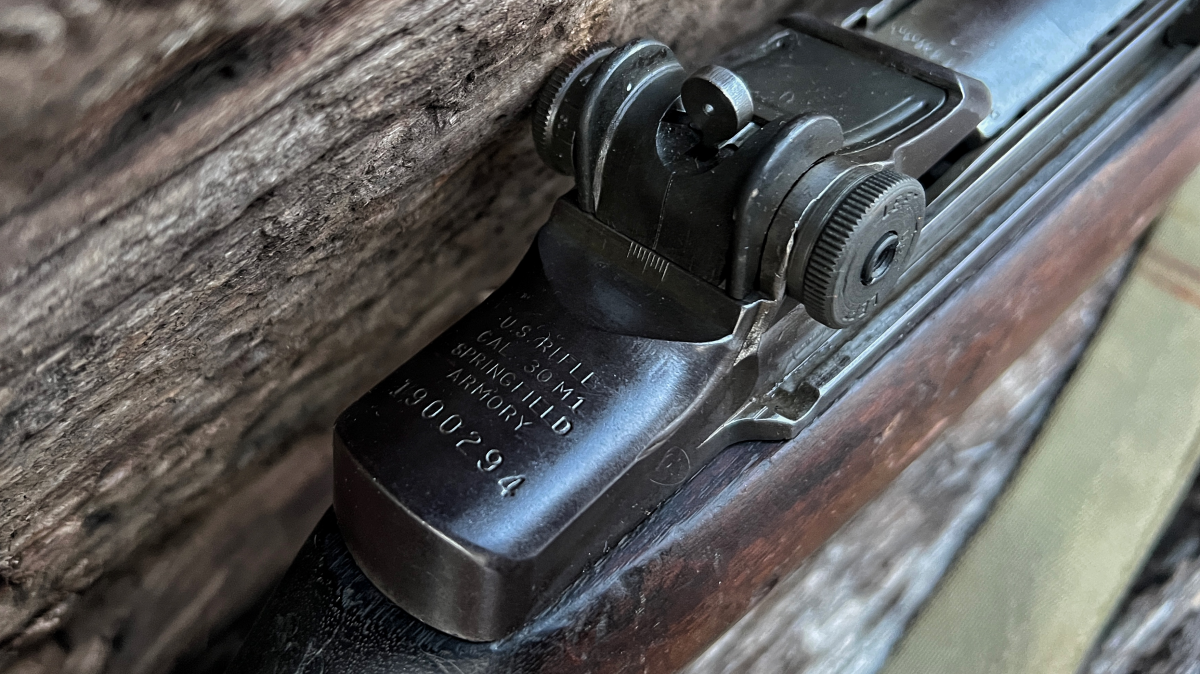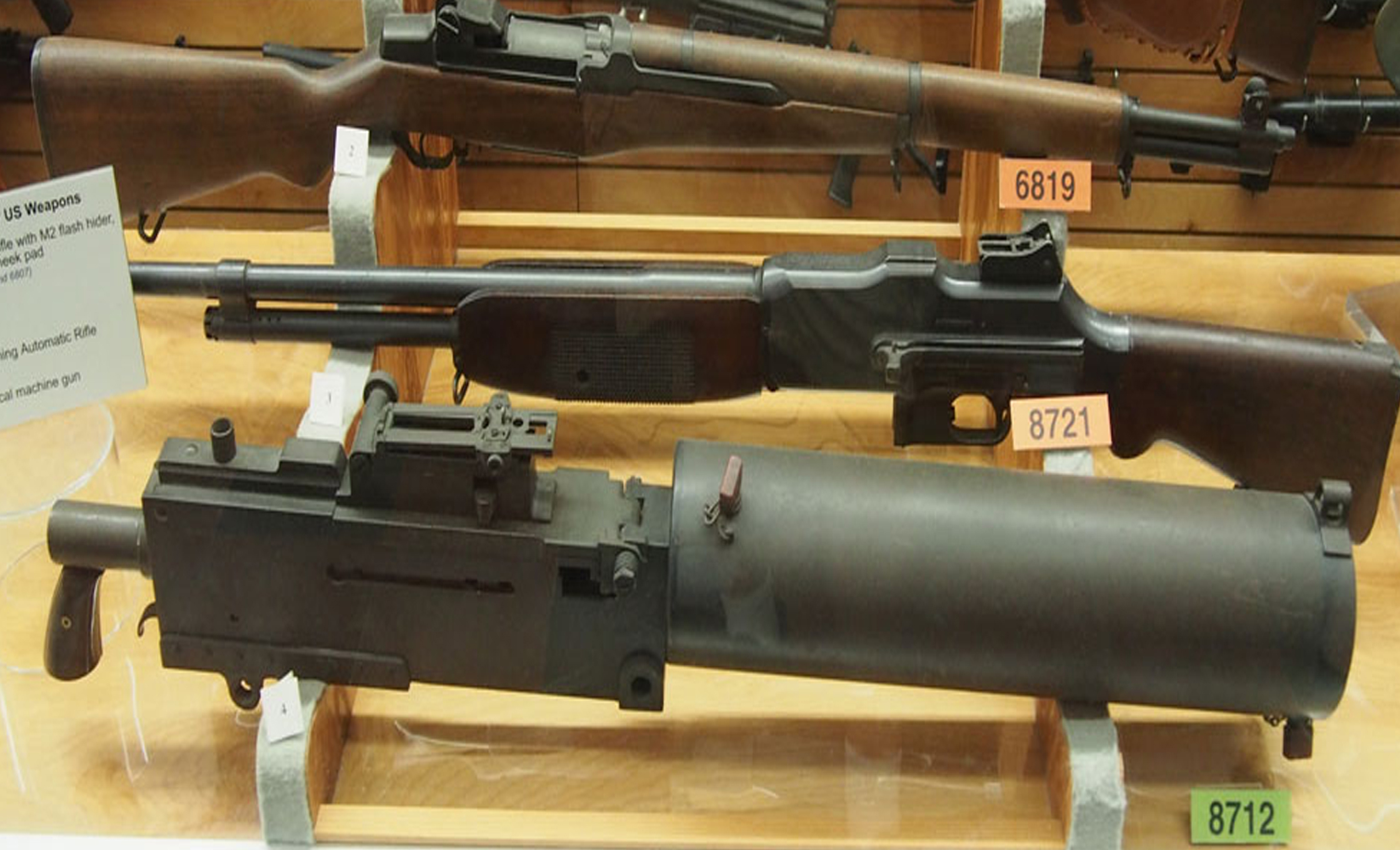M1 Garand Capacity - M1 Garand: History – Standard model service rifles used by combatant nations throughout World War II, including the German Kar 98k, the British Lee-Enfield, the Soviet Mosin-Nagant 91/30, and the Japanese Ariska 38 and 99. They were essentially the same: bolt-action rifles, most of which had their roots in the 1890s and 1900s, required the shooter to unlock the bolt, rotate it, and focus it back after firing. This means that if the gunner misses a temporary target or misses an enemy at close range, he cannot fire a second shot.
Exception: The US Army adopted the semi-automatic M1 Garand rifle as its standard service weapon. A hand-armed GI could fire as fast as he could pull the trigger, a strong advantage at medium and close range.
M1 Garand Capacity

It is true that other countries introduced semi-automatic and even automatic rifles in more limited numbers during World War II. The Soviet Union planned to introduce the SVT-40 semi-automatic rifle on a large scale, but production was limited to 1.6 million rifles due to high costs and production failures caused by the attack. Germany produced about half a million Gewehr 41 and 43 semi-automatic rifles and 424,000 Sturmgewehr 43 or 44 automatic rifles.
C) Harrington & Richardson M1 Garand Semi Automatic Rifle.
But neither is the vast, untouched economic base of the United States, which has produced more than 10 million semiautomatic rifles and carbines. This includes more than 4 million Garand rifles produced by Springfield Armoy and Winchester through 1945, with an average unit price of $85 ($1,400 in 2022 dollars), nearly double that of previous bolt-action rifles.
Kantius Garand learned English at age 12 in a steel mill in Connecticut. A gifted marksman and hobbyist, Garand joined the federal Springfield Armory in 1916.
In 1919, he designed the first in a series of self-loading rifles, the 276-caliber (7-millimeter) T3E2, which in 1931 beat the similar Pedersen T1 rifle in an army competition.
The Army wanted to use the M1 Garand rifle, but had previously rejected the .30 caliber version, but needed a redesign using the .30-06 (7.62×63 millimeter) cartridge used in the M1903 Springfield service rifle.
M14 7.62mm Rifle / M24 7.62mm Sniper Rifle
Redesign, subsequent testing, and troubleshooting delayed the M1's use for nearly a decade. Although officially entered service in 1936, the M1 may not have entered mass production until 1940. Paradoxically, heavy construction has had a positive effect: the Garand, once used in battle, has become unusually reliable for a new complex weapon.
Eight-round clip on top of receiver. When the round is fired, the gas trap captures the gas released from the bullet after it exits the barrel and directs it back to push the stick back. This moved the rotating bolt, ejecting the spent cartridge and placing a new one. When the final stage was fired, the action disengaged the clip with a distinctive metallic ping.
In 1940, the Garand's throttle system was replaced with a more complex and more reliable gas intake throttle port.

The bullet is out of the barrel. The military attempted to upgrade the 50,000 early-production "gas trap" Garands to the new system, but some remained in service at the start of World War II, particularly in the Philippines.
For Sale M1 Garand
The M1 Garand was standard for riflemen with 10 clips (80 rounds), a double strap made of brown leather or olive cloth, and a bayonet that could be mounted on the barrel. Most infantry units carried two or three M7 rifle grenade launchers to go above the bayonet. A special hand-fired blank could propel a rifle grenade up to 300 meters, which was usually fired in an arc with a recoil-absorbing rubber boot mounted on a rod.
The M7 is capable of loading conventional M2 "pineapple" fragmentation grenades, smoke grenades, or 48 millimeter M9 anti-tank grenades. The M9's two-inch armor penetration was insufficient against most World War II tanks (except for the occasional weak point or rear armor), but was still effective against lightly armored vehicles and fortifications.
US Army units mixed Garands and older Springfield rifles during the early battles in the Philippines and Operation Torch in North Africa. It wasn't until 1943 that most Marine Corps units began converting to the M1. However, Garands have been fielded before by elite units such as the Army Rangers at Dieppe and the Marine Raiders that raided Makin Island.
Semi-automatic fire allowed American riflemen to hit twice or more the actual rate of fire of their German and Japanese counterparts at medium and short ranges. The M1 didn't deflect even at long range, and it had a 12% higher velocity than the Kar 98k at 2,800 feet per second, allowing for accurate and good penetration of foliage and other types of cover.
Why The M1 Garand Was The Best Service Rifle Of World War Ii
However, at the squad level, the Garand's firepower was reduced by the squad's smaller secondary Browning Automatic Rifle (BAR) compared to the German MG.34 or MG.42 machine guns.
The 20-pound BAR's lack of a 20-round magazine and quick-change barrel meant continuous fire was impossible. This led to an increase in the number of BAR gunners in American groups from one to two or even three at the end of the war.
In general, the Garand/BAR combination was designed to facilitate offensive fire and maneuver tactics, where the gunners circled the flanks for kills while the BARs overwhelmed the enemy. German teams, on the other hand, were created to support the MG.42's extreme lethality and suppressive capabilities.

One controversial part of Garand's doctrine claimed that a beeping sound from an electric current magazine would alert enemy soldiers that the GI had finished its clip. American soldiers were concerned about this, and some began throwing empty clips to provoke the enemy. But there seems to be no evidence
Springfield Armory M1 Garand 30 06 Rifle
The Garand's biggest drawback was its awkward length, at 9.5 pounds (or 11 fully equipped), 43.7 inches long, the same as most bolt-action rifles weighing 8.5 pounds.
Due to mass availability, auxiliary troops instead received the 5-pounder semi-automatic M1 carbine (no relation to the Garand), of which a staggering 6.1 million were produced. The carbine was also used by front-line infantrymen seeking a more compact weapon than the Garand, but the carbine's bullets had one-third the energy and therefore less range and penetration.
US snipers during World War II often used the M1903A4 bolt-action rifle, but the M1C sniper rifle (7,971 built) saw limited use in the final days of World War II. They have the M73 2.2x zoom scope moved to one side to avoid interference with the receiver, a leather cheek pad on the stock, and a mostly conical M2 flash suppressor on the barrel.
The Pentagon tested two compact versions of the 18-inch (down from 24-inch) barreled Garand for use by paratroopers and Marines in jungle combat: the T26 and the collapsible M1E5, which failed in testing. Garand also designed a 20-round BAR magazine called the T20E2 that fired automatically.
A&k Full Size M1 Garand Airsoft Aeg With Real Wood Furniture, Airsoft Guns, Airsoft Electric Rifles
Meanwhile, in 1944, Japan's Yokosuka shipyard began development of the Type 4 semi-automatic rifle, converted from captured Garands. The Type 4 differed in its 10-round magazine, 7.7mm ammunition, and the use of Japanese-style sights.
The Garand and its sniper version remained the standard American service rifle during the Korean War, and it was resistant to extreme cold weather. In his report, Army historian S.L.A. Marshall praised the rifle for its durability, accuracy, and consistent performance, saying, “
Of all the weapons carried by infantrymen, the M1 was the least susceptible to frost, cold and ice."

The M1 was also widely exported to most of Washington's Cold War allies in Europe, Latin America, and Asia, was used in combat by South Korean and South Vietnamese troops, and was even produced under license by Beretta in Italy. To meet demand, Springfield Armory, International Harvester and Harrington & Richards produced an additional 1.4 million M1s between 1951 and 1957.
The M1 Garand Is The Gun That Won World War Ii
The Garand kit was created in the 1950s. When the M9 rifle grenade became ineffective against North Korea's T-34 tank, new M7A1 and M7A2 missiles appeared, capable of firing the more powerful M28 Energa and M31 anti-tank grenades. About 21,000 improved M1D sniper rifles were also produced for greater stability using an improved scope mount.
However, night operations against waves of Chinese and North Korean troops, freely equipped with PPsH anti-submarine guns, prompted the search for weapons with greater firepower. It supported the final evolution of the M1, the M14: the automatic-fire Garand, which used 7.62mm NATO rounds from a 20-round box magazine.
The M1 was not fully replaced by M14s in active duty US military units until 1965, but continued to be used in many US armed forces for several decades. To this day, some M1s are still in service with honor guards and the odd rebel.
Garand is an early example of how American industrial capacity can be harnessed to achieve a qualitative rather than quantitative advantage. This allowed American soldiers during World War II to adopt a distinctly superior service rifle that skillfully balanced quick-fire capability with long-range strike capability.
Hudson Hudson M1 Garand Springfield Armory M1 Galland Model Gun
Sebastian Roblin writes on the technical, historical, and political aspects of international security and conflict for publications such as The National Interest and NBC News.
Danish m1 garand, m1 garand cotton sling, m1 garand leather sling, m1 garand case, m1 garand web sling, ww2 m1 garand sling, h&r m1 garand, original m1 garand sling, m1 garand, m1 garand strap, m1 garand clip capacity, m1 garand slings
0 Comments